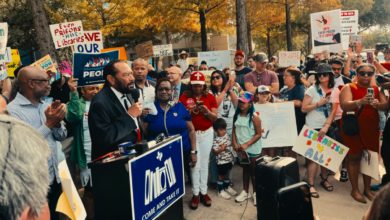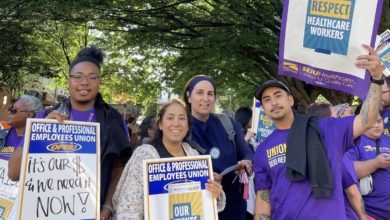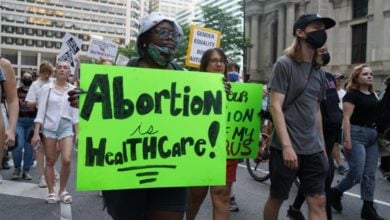The writer is a professor at University of California Los Angeles.
On March 21, the California State University faculty voted overwhelmingly—94 percent—to authorize a strike for increased wages and benefits. The workers, represented by the California Faculty Association, have been working without a contract for over two years.
If a settlement is not reached by an April deadline, a series of two-day rolling strikes up and down the state will happen.
 |
Faculty pay is the primary sticking point. CSU’s faculty members earn salaries much lower than faculty at other universities and even community colleges.
According to a report issued a year ago by the California Postsecondary Education Commission, based on a five-year trend, CSU faculty salaries were estimated to have fallen behind comparable institutions by 18 percent in the 2006-07 academic year. They were 16.8 percent lower than salaries for faculty at similar universities in the 2004-05 academic year.
State schools run like corporations
California’s public universities are structured like for-profit corporations, where executives receive excessive salaries and other perks. Professors and other workers receive much less.
The trustees just gave the CSU chancellor a raise—he’s paid nearly $400,000 each year.
And in January 2006, the CSU trustees granted their top 27 executives an additional four percent pay hike, retroactive to July 2006. These same executives received a 19 percent pay hike just 14 months earlier. (California Progress Report, March 21)
Moreover, while the CSU faculty has gone without a salary increase, top executives at CSU have received millions of dollars in “extra” compensation upon leaving their positions.
According to a San Francisco Chronicle investigation published on July 17, 2006, the 29 highest-paid CSU administrators
have received perks and been kept on university payrolls long after resigning or retiring. Some have received multi-year consulting contracts with CSU or been given “special assignments.” These assignments kept them on CSU’s payroll with six-figure salaries for up to five years, even after taking jobs outside the CSU system.Some examples are as follows:
David S. Spence, a former executive vice-chancellor, was paid $173,952 during his “transition leave” in 2005 after leaving CSU and taking another job.
Peter P. Smith, former president of CSU Monterey Bay, was paid $157,932 during his “transition leave” in 2005.
Marvalene Hughes, former president of CSU Stanislaus, resigned as president in 2004 to take advantage of the governor’s offer of extra benefits for longtime faculty members who retire early. The very next day she was rehired as interim president for another year at a salary of $204,252.
No such perks are ever available to rank-and-file CSU employees.
‘Public education’
While executive salaries and perks continue to increase, and faculty salaries stagnate, CSU students have seen their tuition costs increase by 76 percent over the past 3 years. Tuition has increased by 94 percent since the 2001-02 academic year.
Yet, on March 14, student fees were increased by an additional 10 percent. This marks the fifth hike in student fees in six years. (Daily Bulletin, March 15)
Things are very similar at the University of California. While top administrators make huge salaries compared to other UC workers, the UC Regents voted to increase student tuition by seven percent next fall. Undergraduate tuition at UC has risen 92 percent since the 2001-02 school year.
Both the CSU Board of Trustees and the UC Regents claim they had to increase fees in order to maintain quality education. The UC Regents also noted that more annual increases are likely to come.
Increasing fees places a massive burden on students and their families. These fees do not cover student housing, meals, books or supplies. Given the ever-increasing cost of housing and food, this means that fewer workers can afford to send their children to college.
UCLA student Sarah Andrews told the Daily Bulletin on March 15, “They are trying to tell me that they do not value … students who come from low-income families, students of color and students who are not blessed enough to have parents to pay for a $23,000 education, students who work two to three jobs to get by, students who commute and take the bus to avoid high living costs.”
One would think that “public education” means education provided by the government for the public. But, under capitalism, the provision of education is a profit-driven enterprise where workers and their children shoulder the burden of maintaining the state-run institution.
This contrasts with what public education truly can and should be. Under the socialist system, the government provides free education to all people because education is considered a human right.
Building broad support among workers, students and communities for the CSU faculty in their struggle for a contract is an important part of the overall struggle for a better future.





